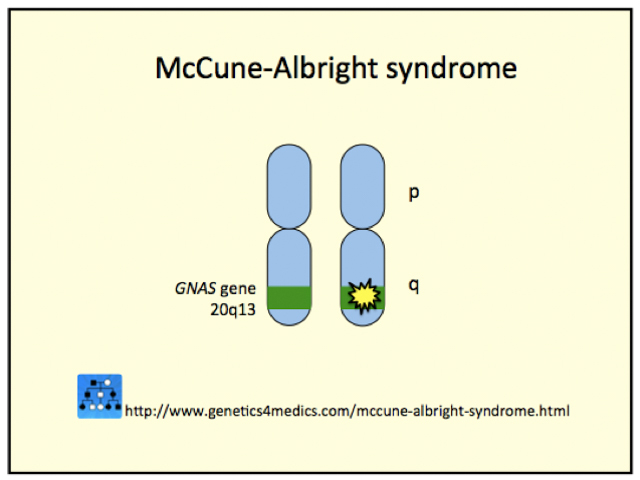Main menu
Common skin conditions

NEWS
Join DermNet PRO
Read more
Quick links
Introduction
Clinical features
Diagnosis
Treatment
Complications
McCune–Albright syndrome (MAS) is a rare condition that was first described in 1937. It is sometimes called Albright syndrome.
The classic triad consists of 3 features:
At least 2 of these features need to be present to diagnose the condition. MAS is caused by a spontaneous (chance) mutation in the GNAS1 gene. This gene then forms an abnormal protein that regulates cell proliferation, migration and survival. The mutation occurs early in the development of an embryo and affects only a subset of the patient's cells (called mosaicism). The mutation cannot be passed on to affected patient's children.
1 - Patchy skin pigmentation |
|
|
2 - Bone abnormalities |
|
|
3 - Endocrine abnormalities |
|
|
4 - Other associated problems |
MAS has been associated with a variety of other clinical problems including:
|
|

Genetics of McCune–Albright syndrome*
*Image courtesy Genetics 4 Medics